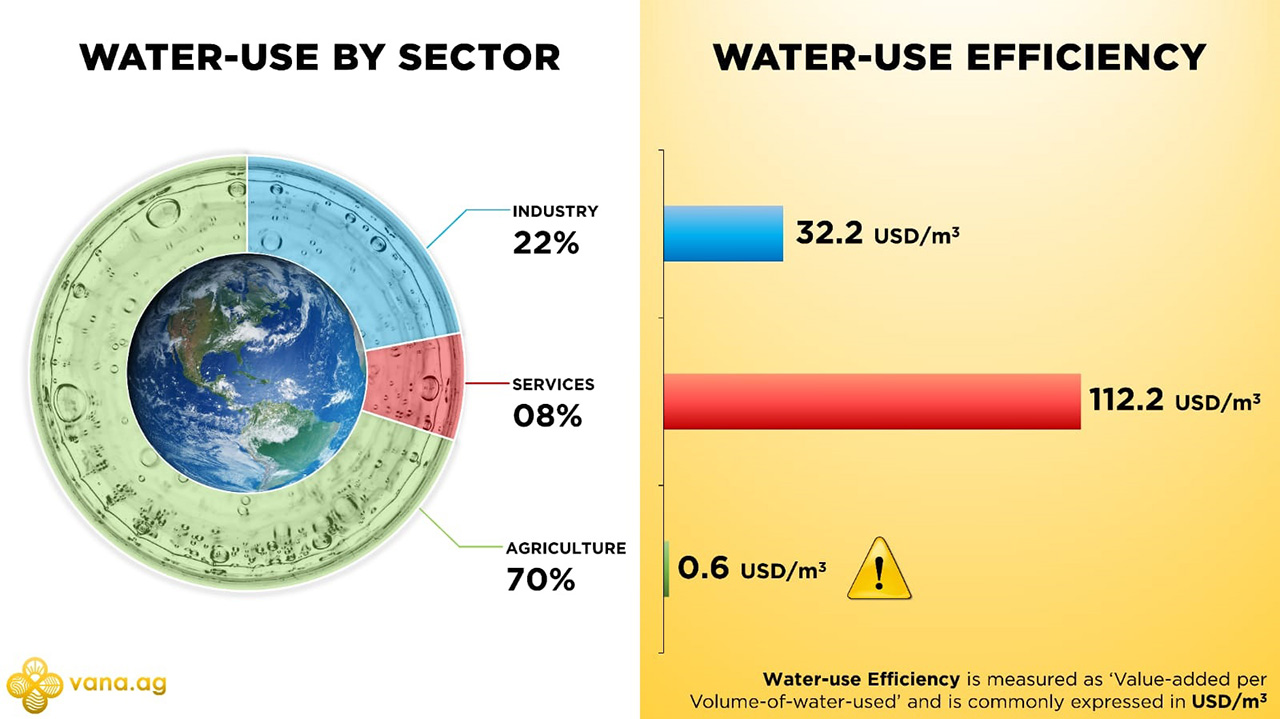
Water-use Efficiency (WUE) is the amount of carbon assimilated as biomass or grain produced per unit of water used by the crop. An essential attribute of WUE is that the water input to a field or an agricultural system is not the same as the water used or depleted for crop production. The water is taken into the system but not consumed and is available downstream, hence excluded from the estimation. Plant water use is mainly affected by changing climatic factors like increasing carbon dioxide concentration, temperature, more viable precipitation and variations in humidity. However, the systems require many critical drivers, including urbanisation, changes in diets and populations, and prices of commodities (outputs) and inputs (seeds, fertilisers, energy, etc.) to rapidly respond to take advantage of the potential gains in water productivity.
The Agriculture sector uses 70% of the water available, with an 8% increase in water-use efficiency between 2015 and 2018. In comparison, the Industry sector consumes around 22% but increased by 15%. Targeting high WUE can reduce the cost of cultivation of crops and lower energy requirements for water withdrawal. Moreover, this reduces the need for additional land and water resources in irrigated and rain-fed systems. Improving water-use efficiency involves close observation of water-use patterns, collaboration, and coordination from various stakeholders in the country’s economic sectors.
Most governments fail to invest in proper maintenance of groundwater and irrigation systems. Poor unplanned agricultural policies further hinder developments in this sector. Several countries, mainly the under-developed countries, have not documented their water use resulting in scarce data and a lack of information to provide efficient solutions exacerbating the progress. Measurement and improvement of WUE thus constitute a strategic response to growing water scarcity, optimisation of other production inputs, and enhanced farm incomes and livelihoods. Presently, there is significant scope for increasing economic water productivity by increasing the value generated by water use and decreasing the associated costs. Increasing water-use efficiency is complex, and challenges are often complicated and locally diverse. The current water management sector should, on the one hand, build resilient water services and sustain water resources and, on the other hand, manage water-related socio-economic impacts.

